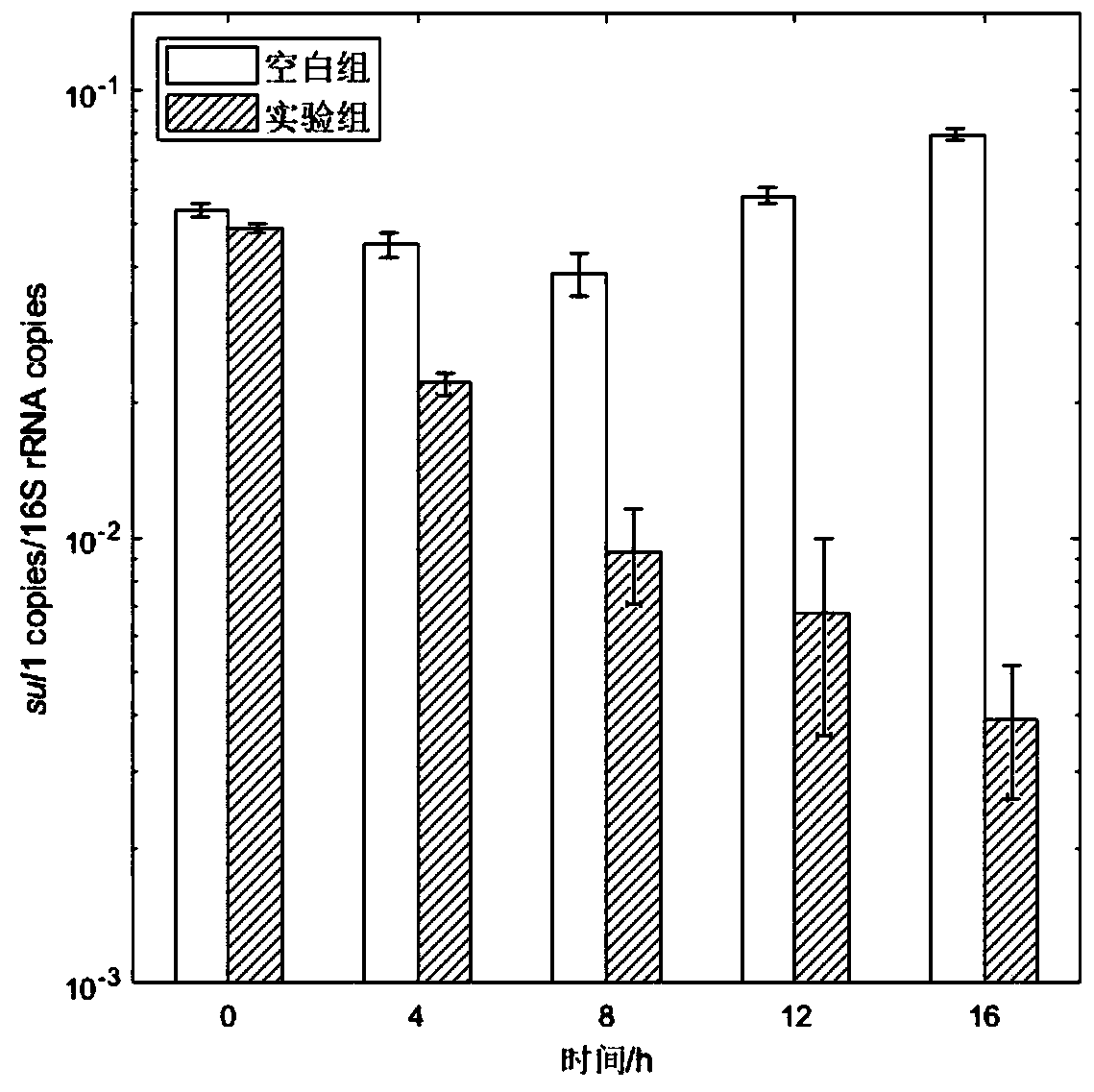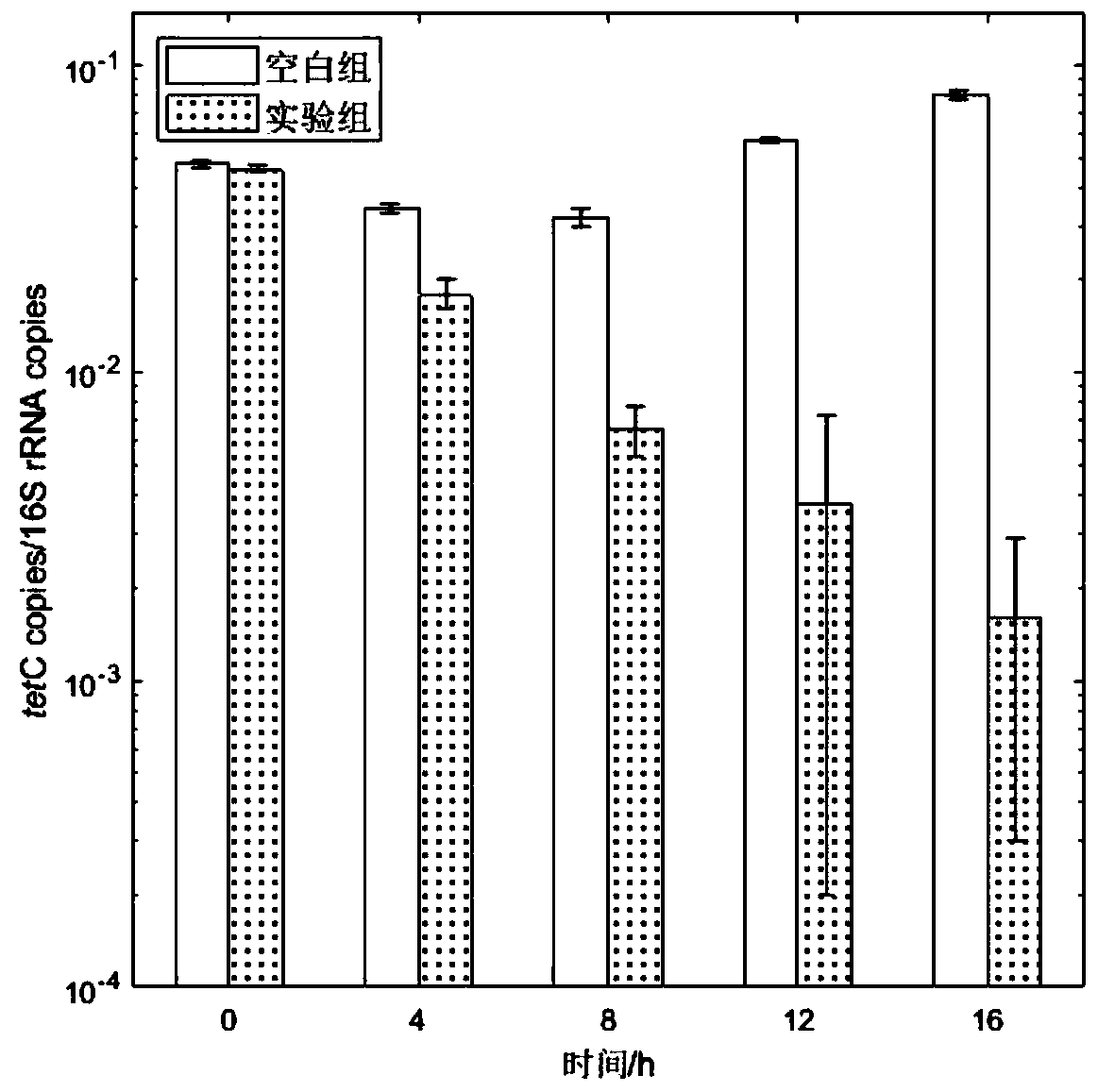Methods of using microbial cleavage reactions to reduce abundance of multiple antibiotic resistance genes in excess sludge and limit their level transfer
An antibiotic resistance, excess sludge technology, applied in the directions of microorganism-based methods, biochemical equipment and methods, biological sludge treatment, etc., to save costs, reduce abundance, and solve transportation difficulties.
- Summary
- Abstract
- Description
- Claims
- Application Information
AI Technical Summary
Problems solved by technology
Method used
Image
Examples
Embodiment 1
[0046] Embodiment 1: a kind of method that uses microbial lysis reaction to reduce the abundance of multiple antibiotic resistance genes and limit its horizontal transfer in excess sludge, described method comprises specifically as follows:
[0047] Step 1: Preparation of bacteriophage-type microbial starter: compound cultured Bdellovibrio, Myxococcus xanthus, yeast and actinomycetes and centrifuge, take the sludge and mix with protective agent and adsorption carrier to prepare phage Type microbial fermentation agent;
[0048] Step 2: Put the phage-type microbial fermentation agent directly into the remaining sludge to be treated.
[0049] The number of live bacteria of Bdellovibrio in the prepared phage type microbial fermentation agent in described step 1) is 5.6 * 10 10 ~7.8×10 10 cfu / g, increasing the concentration of Bdellovibrio in the added bacterial agent can greatly reduce the quality of a single bacterial agent dosage while improving the cracking effect, and reduce...
PUM
 Login to View More
Login to View More Abstract
Description
Claims
Application Information
 Login to View More
Login to View More - Generate Ideas
- Intellectual Property
- Life Sciences
- Materials
- Tech Scout
- Unparalleled Data Quality
- Higher Quality Content
- 60% Fewer Hallucinations
Browse by: Latest US Patents, China's latest patents, Technical Efficacy Thesaurus, Application Domain, Technology Topic, Popular Technical Reports.
© 2025 PatSnap. All rights reserved.Legal|Privacy policy|Modern Slavery Act Transparency Statement|Sitemap|About US| Contact US: help@patsnap.com



